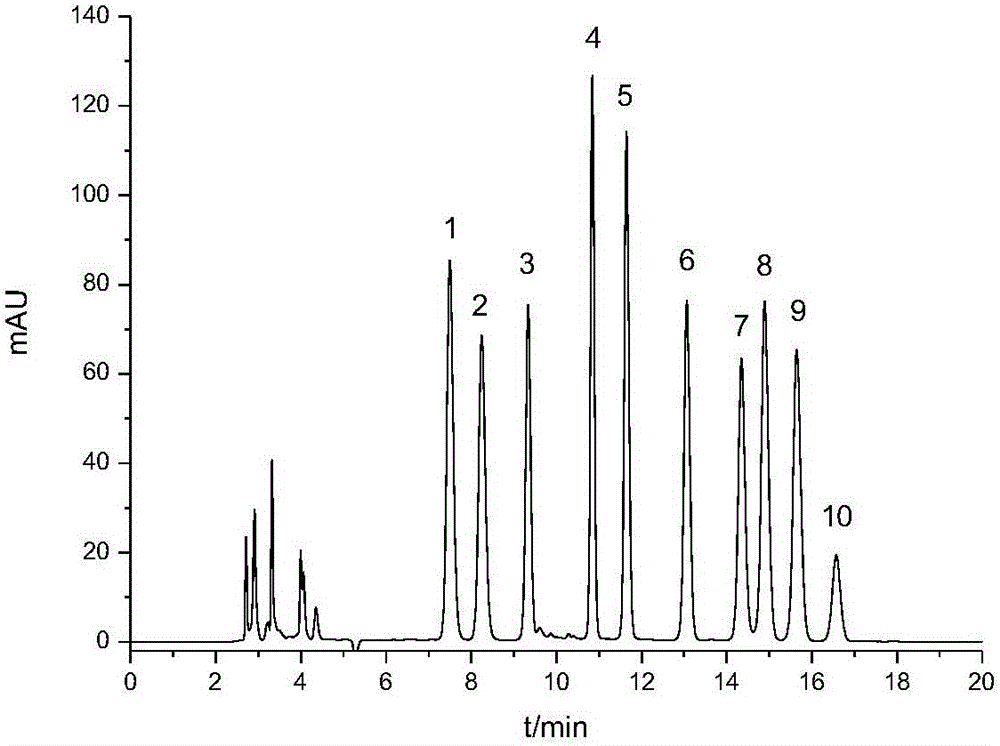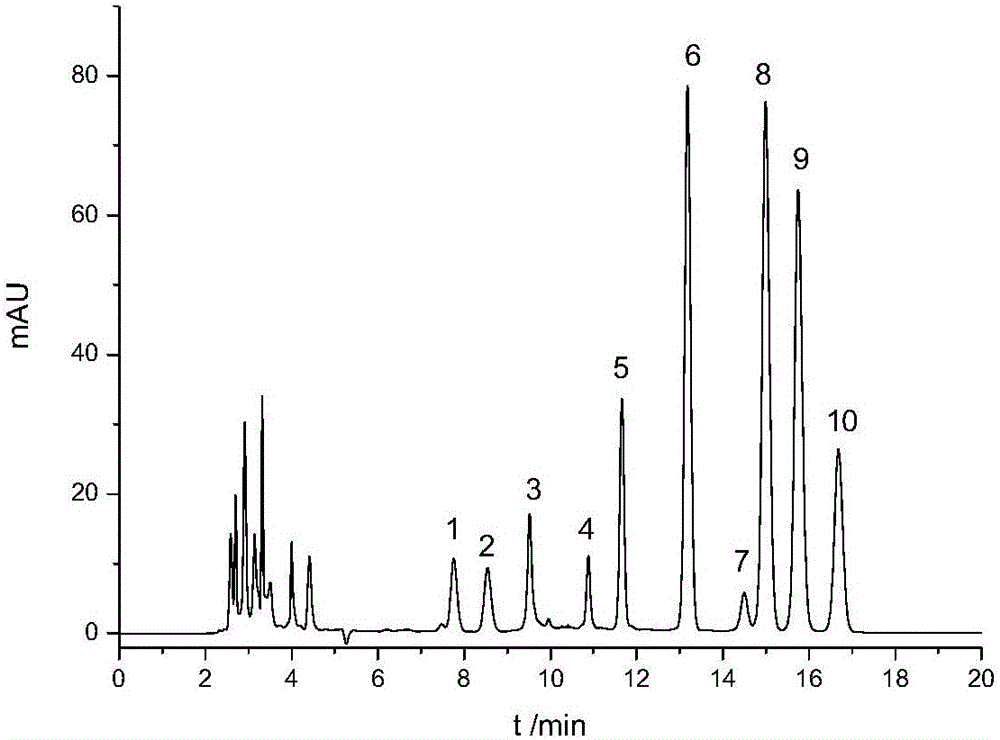Rapid quantitative method for tea polysaccharide monosaccharide composition
A technology of tea polysaccharides and monosaccharides, which is applied in the field of rapid quantification of tea polysaccharides and monosaccharides, can solve the problems of complex derivatization process, inaccurate analysis, and inability to quantitative analysis, achieving remarkable separation effect, improving separation effect, and easy method Achieved effect
- Summary
- Abstract
- Description
- Claims
- Application Information
AI Technical Summary
Problems solved by technology
Method used
Image
Examples
Embodiment 1
[0024] A rapid quantitative method of tea polysaccharide monosaccharide composition, the steps are as follows:
[0025] (1) Place 10 mg of tea polysaccharides in an ampoule tube, add a certain amount of 2.0mol / L trifluoroacetic acid, vacuum seal the tube and hydrolyze the tube at 130°C for 120 minutes, cool to room temperature and blow dry with nitrogen to obtain hydrolyzed polysaccharides;
[0026] (2) Fully dissolve the hydrolyzed polysaccharide in ultrapure water, add trehalose as an internal standard substance to obtain a hydrolyzed polysaccharide solution containing the internal standard;
[0027] (3) Add 0.5 mol / L 1-phenyl-3-methyl-5-pyrazolone (PMP) methanol solution 200 μL and 200 μL of 1-phenyl-3-methyl-5-pyrazolone (PMP) methanol solution to 100 μL of hydrolyzed polysaccharide solution containing internal standard in a volume ratio of 1:2:3. 300μL of 0.3mol / L NaOH solution, mixed uniformly and reacted in 70°C aqueous solution for 60 minutes for derivatization, cooled the re...
PUM
 Login to View More
Login to View More Abstract
Description
Claims
Application Information
 Login to View More
Login to View More - R&D
- Intellectual Property
- Life Sciences
- Materials
- Tech Scout
- Unparalleled Data Quality
- Higher Quality Content
- 60% Fewer Hallucinations
Browse by: Latest US Patents, China's latest patents, Technical Efficacy Thesaurus, Application Domain, Technology Topic, Popular Technical Reports.
© 2025 PatSnap. All rights reserved.Legal|Privacy policy|Modern Slavery Act Transparency Statement|Sitemap|About US| Contact US: help@patsnap.com



